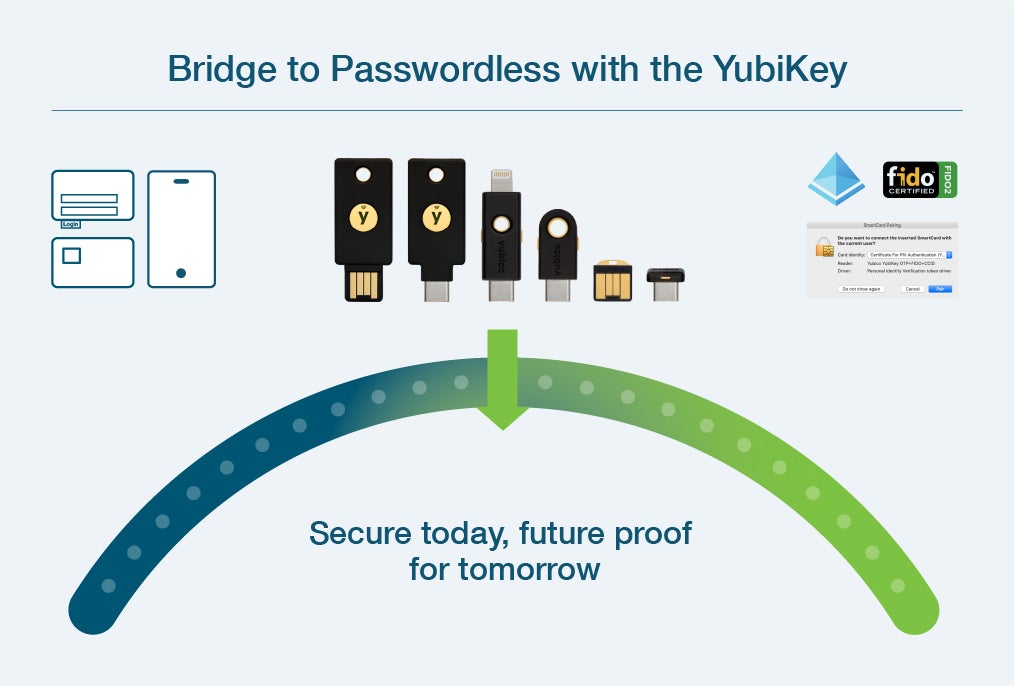In today's digital landscape, ensuring the security of your online accounts is more crucial than ever. One effective way to bolster your security is by deploying YubiKeys, a hardware-based authentication device that provides two-factor authentication (2FA) and protects against phishing attacks. This article will delve into the intricacies of how to deploy YubiKeys, offering step-by-step guidance, best practices, and insights into why they are essential for safeguarding your digital identity.
YubiKeys are designed to work seamlessly with a variety of services, applications, and devices, making them a versatile solution for both individuals and organizations. By the end of this comprehensive guide, you will have a clear understanding of how to set up and deploy YubiKeys to enhance your security posture. We will cover the setup process, compatibility with various platforms, and tips for managing your YubiKeys effectively.
This article is aimed at both tech-savvy individuals looking to implement YubiKeys for personal use and IT professionals tasked with deploying them across an organization. Regardless of your experience level, this guide will equip you with the knowledge to confidently deploy YubiKeys and boost your security.
Table of Contents
- What is YubiKey?
- Why Use YubiKey for Security?
- Types of YubiKeys
- Setting Up Your YubiKey
- Deploying YubiKeys in Organizations
- Best Practices for Using YubiKeys
- Troubleshooting Common YubiKey Issues
- Conclusion
What is YubiKey?
A YubiKey is a small hardware device used for secure authentication. It connects via USB, NFC, or Bluetooth, allowing users to authenticate their identity for online services and applications. YubiKeys support multiple authentication protocols, including U2F (Universal 2nd Factor), OTP (One-Time Password), and FIDO2.
Why Use YubiKey for Security?
Deploying YubiKeys can significantly enhance your security in several ways:
- Protection Against Phishing: YubiKeys provide an additional layer of security, making it difficult for attackers to gain access to your accounts, even if they have your password.
- Ease of Use: Once set up, YubiKeys are user-friendly and can be used with a simple tap or insertion, streamlining the authentication process.
- Support for Multiple Accounts: A single YubiKey can be used across various platforms and services, reducing the need for multiple authentication devices.
Types of YubiKeys
There are several models of YubiKeys available, each designed for specific use cases:
- YubiKey 5 NFC: Compatible with USB-A and NFC-enabled devices.
- YubiKey 5C: Features a USB-C connector, ideal for modern devices.
- YubiKey 5C NFC: Combines USB-C and NFC capabilities for maximum flexibility.
- YubiKey Security Key: A cost-effective option that supports basic FIDO2 authentication.
Setting Up Your YubiKey
Setting up your YubiKey is a straightforward process. Follow these steps:
- Purchase a YubiKey from the official Yubico website or authorized retailers.
- Choose the services you want to secure with your YubiKey. Popular platforms include Google, Facebook, and Dropbox.
- Log in to the desired service and navigate to the security settings.
- Select the option to add a security key or YubiKey. Follow the on-screen prompts to register your YubiKey.
- When prompted, insert your YubiKey into the USB port or tap it against your NFC-enabled device.
- Complete the setup process by following any additional instructions provided by the service.
Deploying YubiKeys in Organizations
For IT professionals, deploying YubiKeys across an organization involves several additional considerations:
- Inventory Management: Track the distribution of YubiKeys to employees to ensure accountability.
- Training: Provide training sessions for employees on how to use YubiKeys effectively.
- Integration: Ensure compatibility with existing security protocols and systems in use within the organization.
Creating a Deployment Plan
To successfully implement YubiKeys in your organization, create a deployment plan that includes:
- Assessment of current security measures.
- Determining the number of YubiKeys required.
- Establishing a timeline for deployment.
- Designating personnel responsible for managing the YubiKey program.
Monitoring and Evaluation
Once deployed, continuously monitor the usage of YubiKeys and evaluate their effectiveness. Gather feedback from employees to identify any challenges and make necessary adjustments.
Best Practices for Using YubiKeys
To maximize the effectiveness of your YubiKeys, consider the following best practices:
- Backup Keys: Always have a backup YubiKey in case your primary key is lost or damaged.
- Secure Storage: Store your YubiKeys in a safe place when not in use.
- Regular Updates: Keep your devices and software updated to ensure compatibility and security.
Troubleshooting Common YubiKey Issues
While YubiKeys are generally reliable, users may encounter issues. Here are some common problems and solutions:
- YubiKey Not Recognized: Ensure that the YubiKey is properly inserted and that the USB port is functional.
- Authentication Failure: Check that you are using the correct YubiKey for the service and that it has been registered correctly.
- Device Compatibility: Verify that your device supports the YubiKey model you are using.
Conclusion
In conclusion, deploying YubiKeys is a powerful way to enhance your online security and protect against unauthorized access. By following the steps outlined in this guide, you can set up and manage YubiKeys effectively, whether for personal use or within an organization. Remember to adopt best practices and continuously evaluate your security measures to ensure ongoing protection. If you found this article helpful, feel free to leave a comment, share it with others, or explore more articles on our site.
Thank you for reading, and we look forward to seeing you again soon!
Fmottrn Leaked OnlyFans: A Comprehensive Analysis Of The Controversy
Does Lamine Yamal Get Paid? A Deep Dive Into His Earnings And Career
Is Noa Argamani Pregnant? Everything You Need To Know


